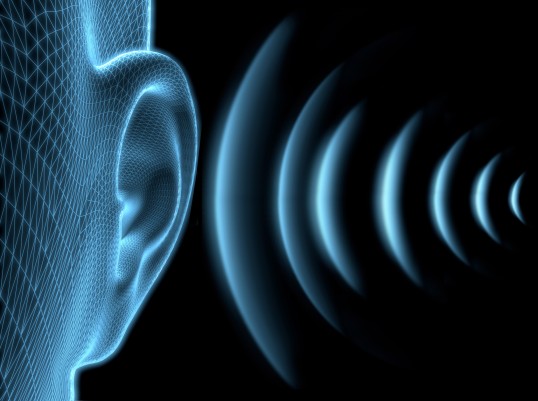- Artificial Intelligence (AI)
- Occupational exposure limit values
- Climate Change and Occupational Safety
- List of CMR substances
- Electromagnetic fields
- Ergonomics
- EU GHS Regulation
- Industrial Security
- Collaborative robots
- Noise
- Nanoparticles at the workplace
- Optische Strahlung
- REACH
- Reference materials
- Proficiency testing
- Vibration
- Virtual reality
- Work 4.0
Hearing loss and its consequences

Graphical representation of the effect of noise upon the ear
Source: © psdesign1 - Fotolia.com
Königstein Recommendation
The DGUV (the umbrella association of the German Social Accident Insurance Institutions) publishes recommendations for the assessment of a range of occupational diseases formally recognized in Germany (ODs, abbreviated in German as BK). The recommendations are intended to support assessors, physicians and claim handlers at the accident insurance institutions in their daily work. They are based upon the latest medical and scientific findings and intended as uniform terms of reference for assessment. The Königstein Recommendation concerns assessment of occupational noise-induced hearing loss (occupational disease No. 2301) and aims to summarise the current state of knowledge.
The recommendation begins with the legal terms of reference and general information on noise-induced hearing loss. This is followed by chapters dealing with diagnosis and evaluation, which are particularly relevant in assessment practice. The mandatory procedures and their aspects relating to occupational disease No. 2301 are explained, such as the detailed case history with differentiation between the occupational and leisure components, examination, pure tone audiometry, tympanometry, speech audiometry and balance test. The evaluation of the findings and resulting determination of causality of the occupational activity for noise-induced hearing loss form the basis for the subsequent assessment of the reduction in earning capacity.
Audio examples
The following audio examples enable hearing loss and its consequences to be experienced first-hand. The examples can be downloaded (size of each file: between 2 and 4 MB).
- Hearing loss (MP4, 4 MB) and its consequences: examples of how music is perceived by healthy vs. impaired hearing
- Problems experienced by the hearing-impaired (MP4, 2 MB) in noisy environments (speech recordings with and without background noise)
- Engineered soundproofing (MP4, 4 MB): compressor noise (one device with noise attenuation, one without)
- Hearing aids are not a panacea (MP4, 4 MB): music, as originally recorded vs. as experienced by a hearing-impaired person wearing a hearing aid
HearLoss is an interactive software application for PC produced by University College London. It demonstrates the effects of hearing loss to people with normal hearing.
